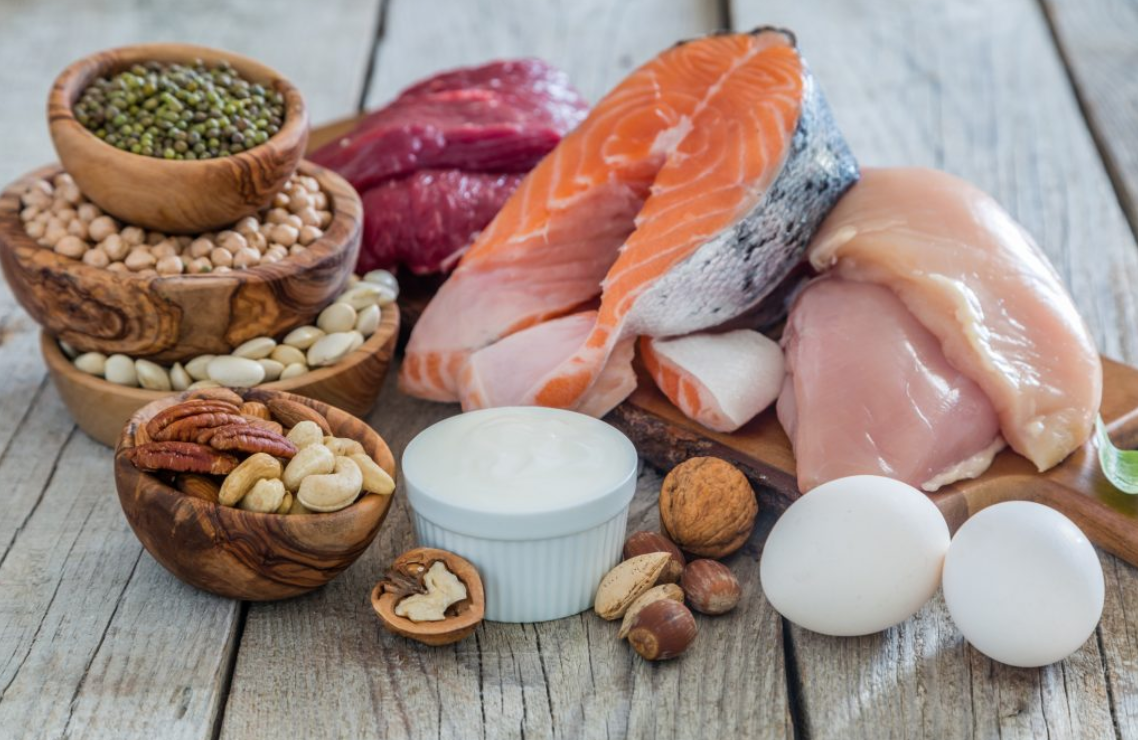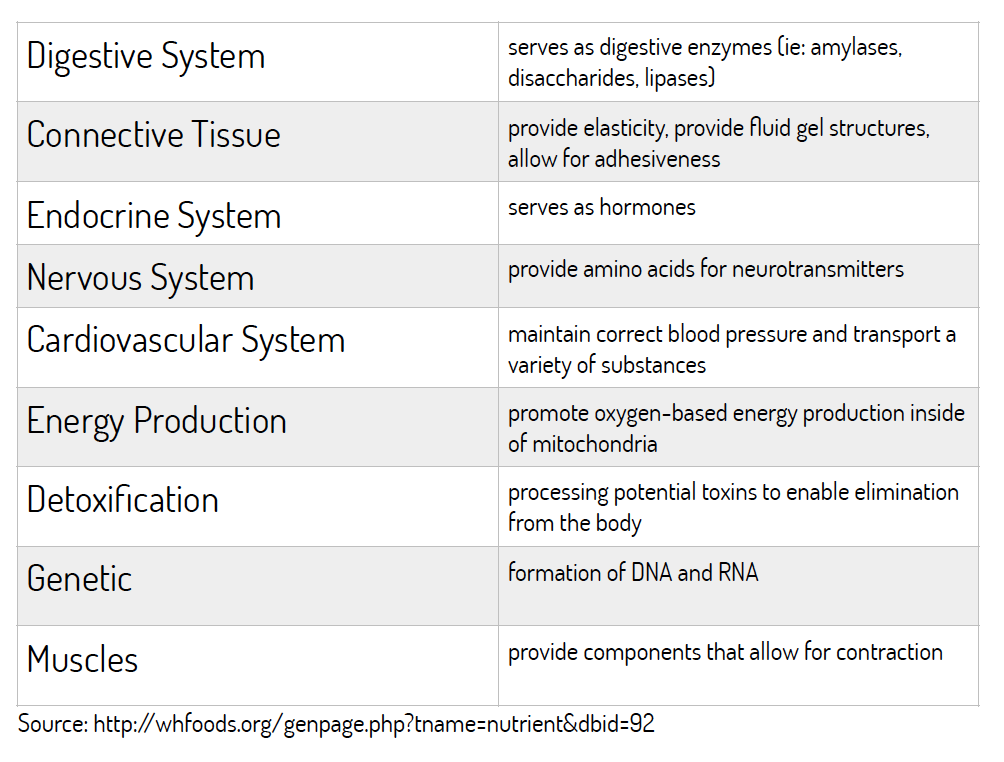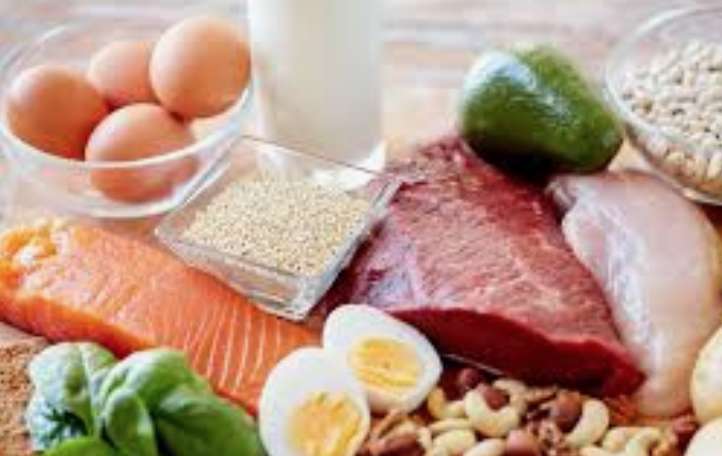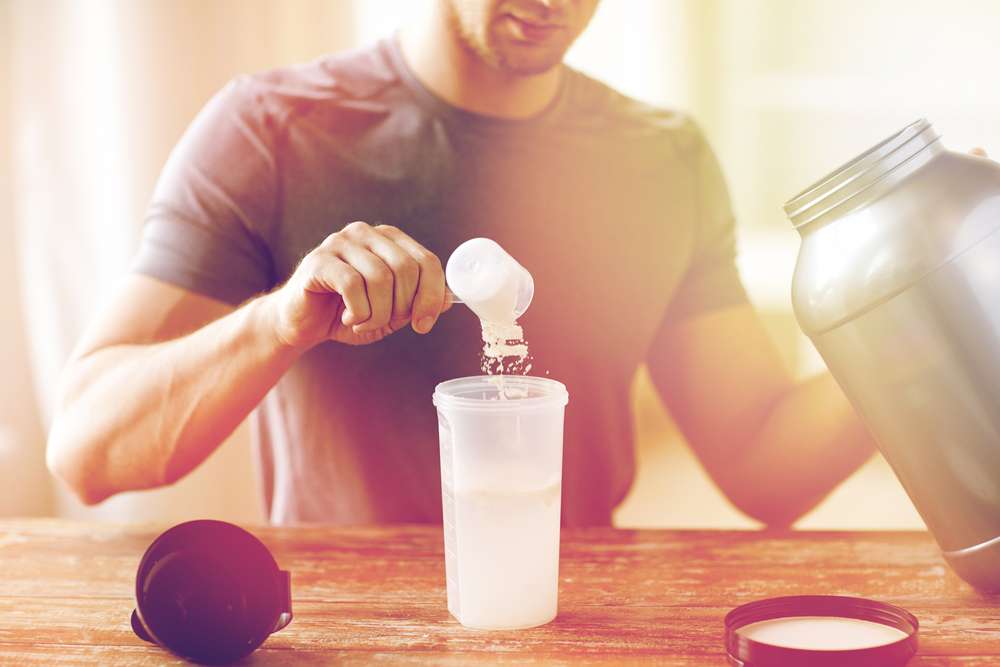December 28, 2018
Whether you are a bodybuilder, endurance athlete or recreational fitness enthusiast, or even a coach potato – you need PROTEIN!

Here’s what we’re laying down:
- Functions of protein
- Protein and muscles
- Protein and weight loss
- How much protein do you need?
- How much is too much?
- Quality sources
.
FUNCTIONS OF PROTEIN
Protein is present everywhere in the body: in muscles, bones, connective tissue, blood vessels, skin, hair, and even fingernails. It’s always being broken down as a result of normal physiological processes and therefore, must be consistently replaced in sufficient amounts. Protein also regulates hormone secretion, maintains the body’s water balance, transports nutrients in and out of all cells, carries oxygen, and regulates blood clotting.
Yup, you’re basically a pile of protein! And it’s always being broken down in the body as a result of normal physiological processes and therefore, must be constantly replaced in sufficient amounts.
The importance of protein is deeply rooted in nutritional science. It’s very name comes from the Latin word protos meaning “first,” and that meaning is consistent with the approach of many researchers who have long considered protein to be a nutrient “of first importance.”
Aside from being the building blocks of muscle, these are the many crucial roles of protein in the body:


PROTEIN & MUSCLES
Unlike carbohydrates and fats, protein contains nitrogen. Sorry, more chemistry here! To build muscle, you must maintain a positive nitrogen balance in the body.
When you have lean muscle tissue, you have a higher metabolic rate, as muscle is a more active thermogenic tissue than fat. By including small amounts of protein in meals and snacks, you can control your appetite, feed your muscles more efficiently, and maintain lean muscle when you’re trying to lose fat.
Protein is constantly being broken down in the body for metabolic purposes, but if you’re an athlete your rate of protein breakdown in the body is greater than a sedentary person. And this goes for ALL athletes. Generally a body builder or power athlete will break down protein at an increased rate over endurance athletes, but even endurance athletes need more dietary protein than sedentary folk due to increased breakdown during their training. In fact, high intensity or prolonged duration endurance exercise (ultra-marathon) breaks down protein even faster than bodybuilders!
Protein is the building block of all muscle tissue, and adequate dietary protein ensures you’re building more than you’re breaking down.
PROTEIN & WEIGHT LOSS
à Protein is satiating. Try it, eat a pasta dish without added protein and see how hungry you are a couple hours later compared to eating the same pasta dish with a big serving of protein with it! It fills you up for longer, which means you tend to eat less – win for weight loss!
à Protein also helps to stabilize blood sugar levels because it’s slower to digest in the body. Eating it with carbohydrates will slow the release of sugars (from that carb) into the blood stream, thereby reducing blood sugar spikes. Balanced blood sugar levels = less hunger and cravings + more energy.
à Protein is a higher thermogenic nutrient than carbs and fats. This means it requires more heat in the body to breakdown and utilize it – which increases metabolism. This is why you often see weight loss diets that are high in protein.
à Increased protein and muscle: it helps with repair and recovery of muscle breakdown from your workouts (both endurance and resistance exercise), it helps to build new muscle tissue (and muscle burns more calories while at rest – bonus!), and it help reduce muscle breakdown when you’re on a reduced calorie diet for weight loss.
SO HOW MUCH?
How much protein is best in the diet is a much debated topic, as it is for all the macronutrients (protein, carbs and fats). Holistically, what is best for one person may not at all be right for another, even if those two people both share similar lifestyle and/or wellness goals. Your needs will depend on many factors, including your current body composition, your goals, and your unique biochemistry.
The RDA for protein is less than a gram/kg of body weight, which often works out to only 10-15%, but general nutritional science and sports nutritionists alike are now agreeing that this number is grossly undervalued. Many experts in the field, including the Institute of Medicine (US) now state that up to 1.4 g/kg of body weight is appropriate, and sports nutritionists agree that up to 2.2g/kg is suitable for athletes whose rate of protein breakdown in the body is greater. This brings that percentage of total daily calories from protein up to 20-35%. Age, muscle mass, exercise type, health status and goals are among the factors that may change how much protein your body needs.
IS TOO MUCH PROTEIN DANGEROUS?
This is a commonly disputed question. I think Precision Nutrition put it best when they explained the correlation – not causation – link between protein and the kidneys:
“It’s the difference between jogging with a broken leg and jogging with a perfectly healthy leg.
Jogging with a broken leg is a bad idea. Doctors would probably tell you not to jog if your leg is broken. But does jogging cause legs to break? No.
That’s the same thing with protein and kidneys. Eating more protein does increase how much your kidneys have to work (glomerular filtration rate and creatinine clearance), just like jogging increases how much your legs have to work. But protein hasn’t been shown to cause kidney damage — again, just like jogging isn’t going to suddenly snap your leg like a twig.
High-protein diets do result in increased metabolic waste being excreted in the urine, though, so it’s particularly important to drink plenty of water to avoid dehydration.”
The same is true of your liver.
What about too much protein leaching calcium from your bones?
Here we quote our research and science writer Leesa Klich:
“We originally thought this—and for good reason—but new research has proven a different mechanism is at work. We’ve known for decades that after eating a high-protein meal there’s more calcium in the urine. The hypothesis (best guess) at the time was that the protein we just ate somehow “leached” calcium from our bones, hence we urinate it out. But, this never made much sense because people who eat more protein tend to have stronger bones. So more studies were done to find out where this extra urinary calcium comes from. In 2004 we learned that it comes from the meal itself—not your bones! This makes a ton of sense because when we absorb a lot more calcium from our food this not only can make our bones stronger, but also allows us to absorb a bit more than we need, so we excrete the excess in the urine.”
source: https://leesaklich.com/health-research/nutrition-claims/
Other reputable sources, upon evaluation of the literature and studies surrounding the too-much-protein debate state:
“In conclusion, randomized trials thus far have not shown high protein diets to have harmful effects on the bones or kidneys in otherwise healthy adults.”
“The Truth: Protein, even in large amounts, isn’t harmful to your bones or kidneys (unless you suffer from a pre-existing condition).
source: https://examine.com/nutrition/awful-nutrition-myths/#summary1
So what is considered a “High Protein Diet”?
There is not a specific number or range that constitutes “high protein”. It is more a general observation to mean more than the amounts usually recommended. So to summarize, a high protein diet (above 20-35%) does not seem to be dangerous for healthy individuals with no existing liver or kidney concerns. However, one must ask:
At what expense to the other crucial macronutrients (carbohydrates and healthy fats) is consuming more than 35% of your total daily calories from protein causing? This is why, although it may not be dangerous, eating a high protein diet may not be the most healthful way of eating.
To read more about carbs and healthy fats, check out our other articles on them!
The Mighty Carbohydrate
Healthy Fats: The Perpetual Protector
QUALITY SOURCES OF PROTEIN

Like ALL food, quality is the first priority (arguably more important than quantity). Chose organic, non-GMO, grassfed, hormone and antibiotic free products whenever possible, while minimizing processed products.
Animal products are complete proteins (meat, eggs and dairy). This means that the amino acid profiles that the food breaks down into inside our bodies has all that we need. Plant-based sources of protein generally are lacking in some of the amino acids our bodies need. But fear not – it’s a myth that you can’t get enough protein on a plant-based diet – you absolutely can! It just takes a little extra mindfulness to ensure you’re getting a broad range of types of protein foods so that you build a pool of all those essential amino acids within the body.
A few plants do, in fact, have all those amino acids. They are chia, hemp and flax seeds, as well as soy products. Aside from these, there are lots of plants that have good amounts of protein, including spinach and other greens, broccoli, bok choy, legumes such as lentils, chickpeas, kidney and black beans, pumpkin seeds, and grains such as quinoa, amaranth, and buckwheat.
The Power of Protein
The entire contents of this website are based upon the opinions of Build Holistic Nutrition. Please note that Build Nutrition is not a dietitian, physician, pharmacist or other licensed healthcare professional. The information on this website is NOT intended as medical advice, nor is it intended to replace the care of a qualified health care professional. This content is not intended to diagnose or treat any diseases. Always consult with your primary care physician or licensed healthcare provider for all diagnosis and treatment of any diseases or conditions, for medications or medical advice, as well as before changing your health care regimen.
© BUILD NUTRITION 2025. ALL RIGHTS RESERVED. PRIVACY POLICY
Go ahead, creep us on social. You know you want to!
